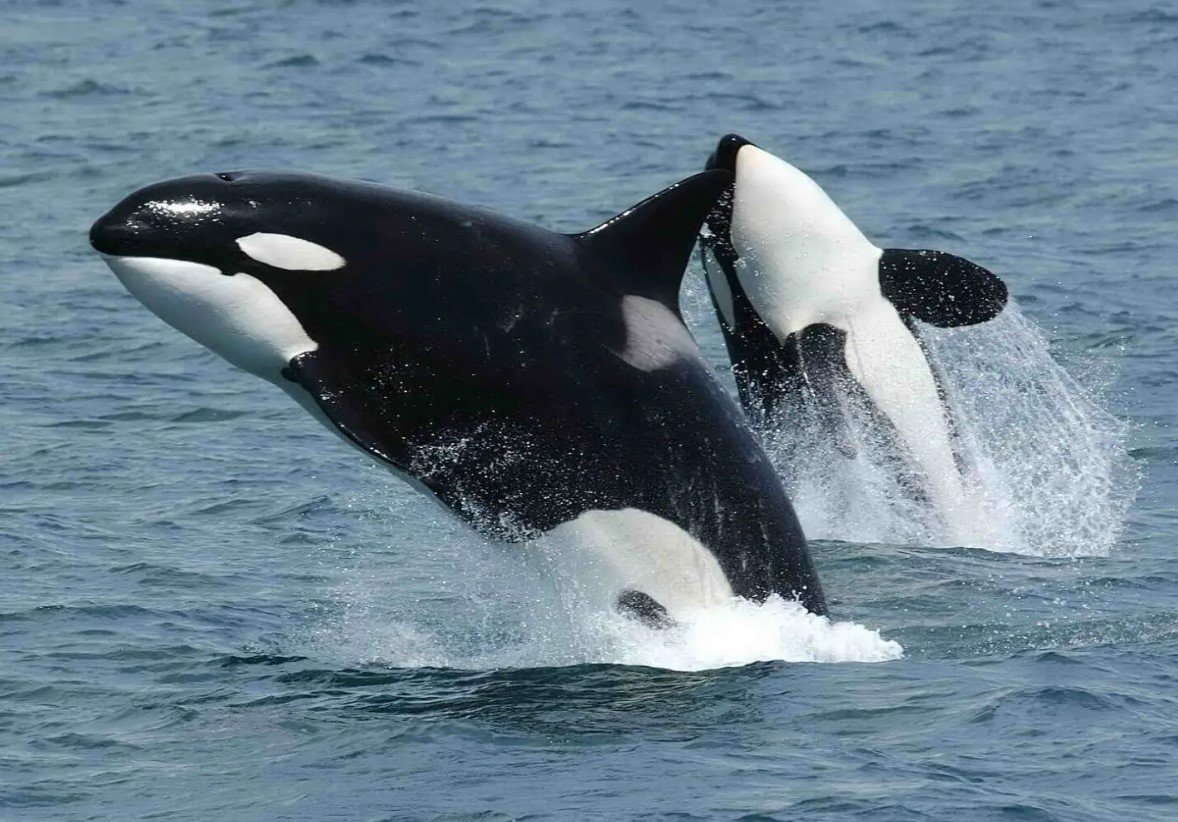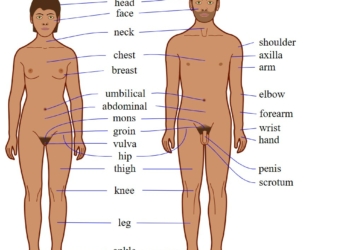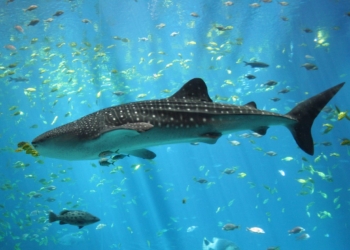Ever wondered about the lifespan of the majestic orca whale? Curious to know how many years these incredible marine creatures roam the oceans? Dive into this post as we explore the fascinating longevity of orcas. With their distinct black and white markings and powerful presence, orcas, also known as whales, captivate us not only with their beauty but also with their remarkable endurance in the wild. Join us on a journey through the depths of the ocean to uncover the secrets behind a whale’s lifespan.
Understanding Orca Whales
Lifespan of Orca Whales
Orca whales, also known as killer whales, have a lifespan similar to humans. They can live up to 90 years in the wild. This longevity is attributed to their intelligence and social structure that helps them navigate various challenges in their environment. Despite living in the wild, orcas, also known as whales, have relatively long lifespans compared to other marine species.
Orcas are known for forming strong family bonds within pods that consist of multiple generations. These tight-knit groups support each other throughout their lives, contributing to their extended lifespan. The support system within the pod ensures that younger orcas learn essential survival skills from older members, enabling them to thrive and survive longer in the wild.

Factors Affecting Orca Lifespan
While orcas have impressive lifespans, several factors can impact how long they live. One key factor is environmental pollution which can introduce toxins into their food chain and habitat, affecting their health and longevity. Human activities such as hunting and captivity significantly reduce an orca’s natural lifespan.
Average Lifespan of Orca Whales
Wild Orca Whales
Orca whales in the wild typically live for 50-60 years. Female orcas have a longer lifespan compared to males, with some females reaching up to 90 years old. The average lifespan of wild orcas is influenced by various factors such as food availability, environmental conditions, and predation risks. Despite their long lifespan, wild orcas face threats like pollution, habitat loss, and climate change that can impact their survival.
Captive Orcas
In contrast to their wild counterparts, captive orcas have a shorter lifespan averaging around 20-30 years. The difference in longevity between captive and wild orcas is attributed to several factors including restricted environments, artificial diets, social stress from living in captivity, and lack of mental stimulation. These conditions can lead to health issues and behavioral abnormalities that contribute to the reduced lifespan of captive orcas.
Captivity challenges:
Limited space for movement
Artificial feeding routines
Health implications:
Increased stress levels
Lack of mental stimulation
Captive environments do not fully replicate the natural habitats where orcas thrive; this discrepancy affects their overall well-being and longevity.
Factors Influencing Orca Lifespan
Diet
Orca whales’ lifespan is significantly influenced by their diet. Those that have a diverse range of prey tend to live longer. For example, orcas that primarily feed on fish like salmon might not live as long as those that also consume seals and other marine mammals. The variety in their diet ensures they receive all the necessary nutrients for a healthy life.
In contrast, orcas facing challenges in finding food due to overfishing may suffer from malnutrition, affecting their overall health and potentially shortening their lifespan. This highlights the critical role of a varied and abundant food supply in supporting the longevity of orca whales.
Environmental Factors
Environmental factors such as pollution and climate change can have detrimental effects on orca whales’ health and longevity. Pollution in oceans can contaminate the water and prey sources, exposing orcas to harmful chemicals that can impact their immune system and reproductive health.
Climate change alters ocean conditions, affecting the availability of prey species crucial for orcas’ survival. Changes in temperature can disrupt ecosystems, leading to food scarcity for these magnificent creatures.
Social Bonds within Pods
The social structure within orca pods plays a significant role in influencing their overall well-being and lifespan. Strong social bonds among pod members provide support, protection, and opportunities for learning essential hunting skills from experienced individuals.
Furthermore, these social connections contribute to reducing stress levels among orcas, promoting mental well-being crucial for a healthy life span. The emotional support provided by pod members enhances resilience against external threats and challenges faced by these intelligent marine mammals.
Comparison with Other Marine Mammals
Lifespan Variations
Orca whales, also known as killer whales, boast a remarkable lifespan compared to other marine mammals. While orcas typically live between 50 to 80 years in the wild, they outlive species like dolphins and sea lions. For instance, bowhead whales have been documented to live over two centuries, making them the longest-lived marine mammals. On the other hand, sea lions and seals generally have shorter lifespans than orcas.
Some species of dolphins can live up to 40 years on average in their natural habitat. In contrast, orca whales’ longevity surpasses that of dolphins by several decades. These differences in lifespan among marine mammals are influenced by various factors such as size, diet, habitat conditions, and predation risks. The diverse lifespans across marine mammal species showcase the intricate balance of nature’s mechanisms at play within ocean ecosystems.
Impact of Environment
The environment plays a crucial role in determining the lifespan of marine mammals like orcas. Factors such as pollution levels in oceans can significantly impact their health and longevity. For example, exposure to toxic substances like heavy metals can lead to severe health issues for these creatures and shorten their lifespans. Climate change-induced alterations in ocean temperatures and food availability pose challenges for the survival of marine mammals.
Orcas: Live around 50-80 years.
Dolphins: Average lifespan about 40 years.
Bowhead Whales: Can live over 200 years.
Sea Lions/Seals: Generally shorter lifespans than orcas.
Human Interaction
Human activities also pose threats to the lives of marine mammals like orcas through issues such as entanglement in fishing gear and collisions with boats during transportation routes near their habitats.
Role of Captivity on Lifespan
Stress in Captivity
Orcas held in captivity experience higher levels of stress than those in the wild. The limited space in tanks and separation from their natural habitat lead to anxiety and frustration among captive orcas. This chronic stress can weaken their immune systems, making them more susceptible to diseases.
Stress levels are elevated due to confined spaces.
Separation from their natural habitat causes distress.
Health Issues
The stressful conditions of captivity often result in various health problems for orcas. These issues can range from dental infections, skin disorders, and gastrointestinal diseases. Inadequate care and unnatural environments contribute to the development of these ailments, ultimately impacting the lifespan of captive orcas.
Dental infections are common among captive orcas.
Unnatural environments lead to skin disorders.
Negative Effects of Capture
The act of capturing wild orcas for entertainment purposes has detrimental consequences on their overall well-being and longevity. Wild orcas are subjected to trauma during capture processes, which can have lasting effects on their physical and mental health. Being taken away from their families also disrupts social structures crucial for their survival in the wild.
Impact of Human Activities on Orca Longevity
Pollution Effects
Pollution, like chemical contaminants and noise pollution, can harm orcas, impacting their health and lifespan. Chemical contaminants from industrial waste can accumulate in the orcas’ bodies, affecting their immune systems. Noise pollution from ship traffic disrupts their communication and echolocation abilities, crucial for hunting and navigating.
Overfishing reduces prey species available to orcas, leading to malnutrition and shorter lifespans. Depletion of fish populations due to overfishing also affects the entire marine ecosystem. Without enough food sources, orcas struggle to thrive and reproduce, further endangering their populations.
Overfishing Consequences
Overfishing leads to:
Reduced prey availability
Malnutrition among orcas
Collisions with boats pose a significant threat to orcas as these large mammals often inhabit areas close to shorelines where maritime traffic is heavy. The impact of a collision can cause severe injuries or fatalities among the already endangered population of killer whales. Entanglement in fishing gear such as nets and lines poses another danger that could lead to suffocation or serious injuries for the animals.
Boat Collisions and Entanglement Risks
Boat collisions result in:
Severe injuries/fatalities
Endangered population risks
Human activities have direct repercussions on the longevity of orca whales by disrupting their natural habitats and food sources while exposing them to various dangers like pollution, overfishing consequences, boat collisions, and entanglements. These threats not only reduce the average lifespan of individual whales but also endanger entire populations by hindering reproduction rates due to malnutrition or fatal injuries caused by human interference.
Conservation Efforts for Orca Whales
Protecting Critical Habitats
Conservation organizations are dedicated to safeguarding vital habitats for orcas like the Southern Resident killer whale population in the Pacific Northwest. By establishing marine protected areas and implementing strict regulations, these groups aim to ensure that orcas have safe spaces to thrive without human interference. For instance, creating no-go zones for boats near feeding grounds can help reduce disturbances and protect the whales’ natural behaviors.
Mitigating Human Impact
Efforts are underway to minimize pollution and mitigate human activities that harm orca populations. By reducing plastic waste, controlling chemical runoff into oceans, and promoting sustainable fishing practices, conservationists strive to create a healthier marine ecosystem for orcas. Raising awareness about the dangers of noise pollution from vessels can help decrease stress levels in whales and improve their overall well-being.
Research and Monitoring Programs
Research initiatives play a crucial role in gathering data to inform conservation strategies aimed at securing the long-term survival of orca whales. Through tracking population trends, studying habitat use patterns, and monitoring health indicators, scientists can better understand the challenges facing orcas and develop effective management plans tailored to their specific needs.
Conduct regular surveys to assess population dynamics
Analyze dietary habits through prey sampling techniques
How to Help Orca Whales Live Longer
Sustainable Fishing Practices
Supporting sustainable fishing practices is crucial in maintaining healthy prey populations for orcas. By ensuring that fishing methods are environmentally friendly and do not deplete fish stocks, we can help orcas access an abundant food supply. For example, promoting the use of selective fishing gear that reduces bycatch can prevent unnecessary harm to marine life.
One way to support sustainable fishing is by choosing seafood products that are certified as sustainably sourced. This certification ensures that the fish were caught using methods that minimize environmental impact and protect marine ecosystems. Advocating for policies that regulate fishing activities in critical orca habitats can help preserve their main food sources.
Reducing Plastic Waste and Minimizing Pollution
Another way to contribute to the longevity of orca whales is by reducing plastic waste and minimizing pollution in their marine environment. Plastic pollution poses a significant threat to orcas as they can mistakenly ingest plastic debris, leading to health issues and even death. By reducing our use of single-use plastics and properly disposing of waste, we can help create a cleaner ocean for orcas.
Participating in beach clean-up initiatives and supporting organizations dedicated to ocean conservation are effective ways to combat plastic pollution. Educating others about the harmful effects of plastic on marine life, including orcas, can also raise awareness and promote responsible waste management practices.
Advocating for Stricter Regulations on Captive Marine Mammal Facilities
Advocating for stricter regulations on captive marine mammal facilities is essential for improving the welfare and longevity of orcas held in captivity. These regulations can ensure that captive orcas are provided with adequate living conditions, proper healthcare, social interactions, and enrichment activities necessary for their well-being.
Future of Orca Whales
Global Efforts
Efforts to protect wild killer whales are crucial for the future of orca whales. Addressing climate change and safeguarding their habitats are essential steps. Without these measures, the survival of orca populations may be at risk.
Conservation initiatives must continue to ensure the well-being of wild killer whales. Research plays a vital role in understanding orcas’ behaviors, health, and needs. By studying these aspects, scientists can make informed decisions to protect and conserve these magnificent creatures.
Public Awareness
Raising public awareness is key to securing a positive future for orca whales. Educating communities about the importance of conservation fosters empathy towards wild killer whales. With increased awareness, individuals can make informed decisions that support efforts to protect these marine animals.
Public education programs help people understand the impact of human activities on orcas’ lives. By learning about the threats they face, such as pollution and habitat destruction, individuals can take action to mitigate these risks. Empowered with knowledge, communities can advocate for policies that benefit wild killer whales.
Summary
You’ve delved into the world of orca whales, understanding their lifespan, the factors that influence it, and the impact of human activities on these majestic creatures. Comparing them to other marine mammals shed light on their unique characteristics, while exploring the effects of captivity emphasized the importance of conservation efforts. As you look to the future, remember that every action counts in helping orca whales live longer and thrive in their natural habitats. Whether it’s supporting conservation organizations, spreading awareness, or making sustainable choices, your involvement can make a difference. Together, we can ensure a brighter future for these incredible beings.
Frequently Asked Questions
How long do orca whales typically live in the wild?
Orca whales in the wild have an average lifespan of around 50 to 80 years. Factors like food availability, environmental conditions, and human impact can influence their longevity.
What factors affect the lifespan of orca whales?
The lifespan of orca whales can be influenced by various factors including prey availability, pollution levels, habitat quality, social interactions within pods, and stress from human activities like noise pollution and captivity.
Do orcas live longer in captivity compared to the wild?
Orcas tend to have shorter lifespans in captivity due to stress-related issues, restricted environment, unnatural diet, and lack of social interactions. The average lifespan of captive orcas is significantly lower than those living in their natural habitat.
How can human activities impact the longevity of marine mammal orca whales’ habitat use in waters with sea lions?
Human activities such as pollution (chemicals, plastics), overfishing reducing prey availability, vessel strikes causing injuries or deaths, noise pollution disrupting communication and hunting behaviors all contribute to a negative impact on the longevity of orca whales.
What conservation efforts are being made to help protect marine mammal populations, including orca whales, sea lions, and other species, in the waters for their recovery?
Conservation efforts for protecting orca whale populations include establishing marine protected areas where they inhabit, reducing pollutants entering their habitats through regulations and clean-up initiatives, monitoring populations for health assessments and trends, advocating for sustainable fishing practices that consider their prey species.











